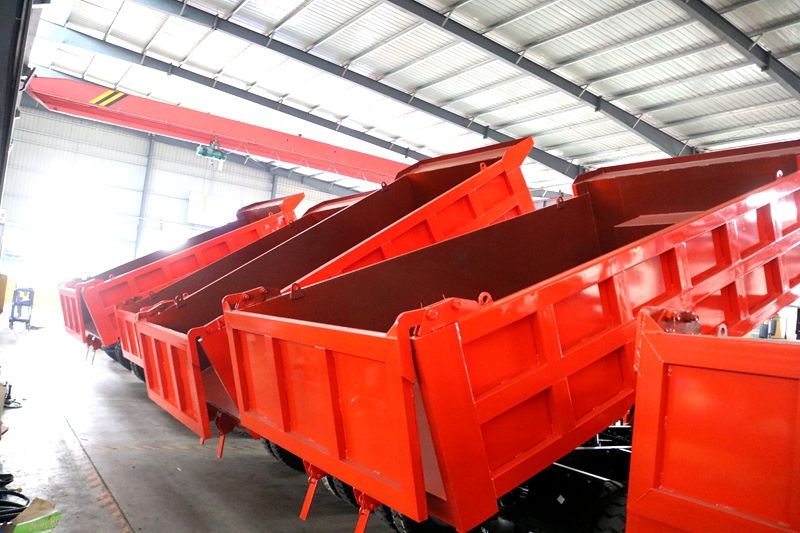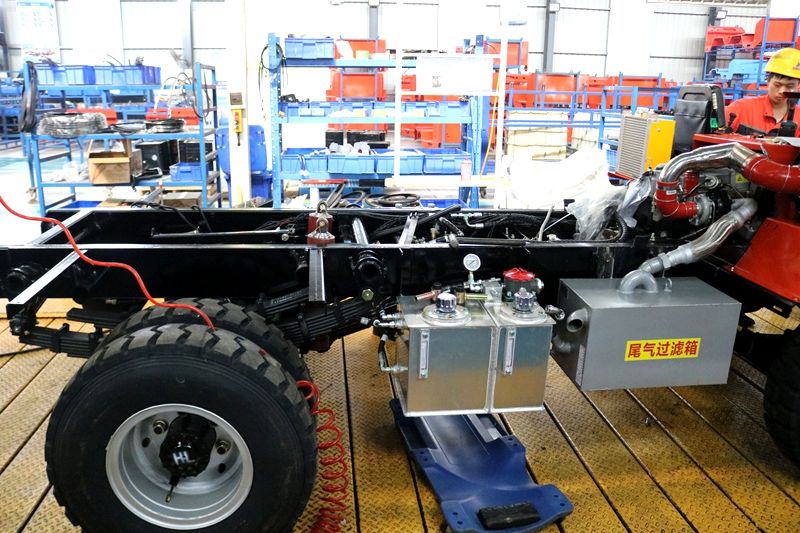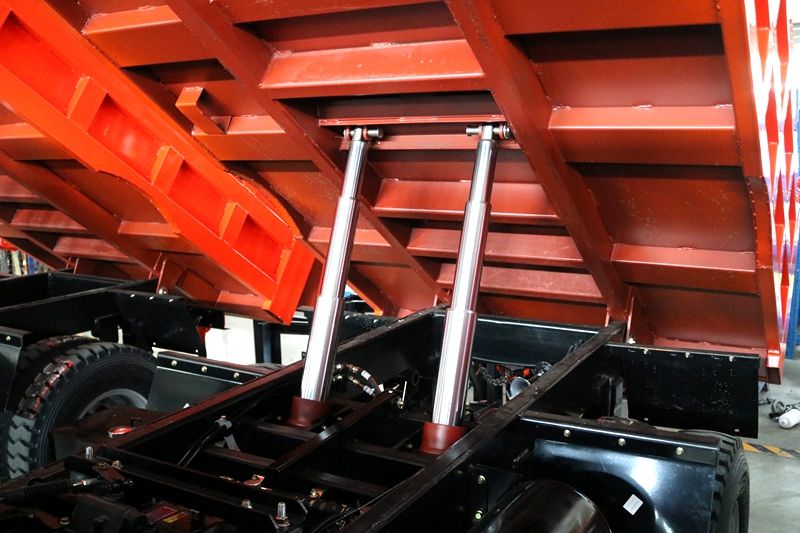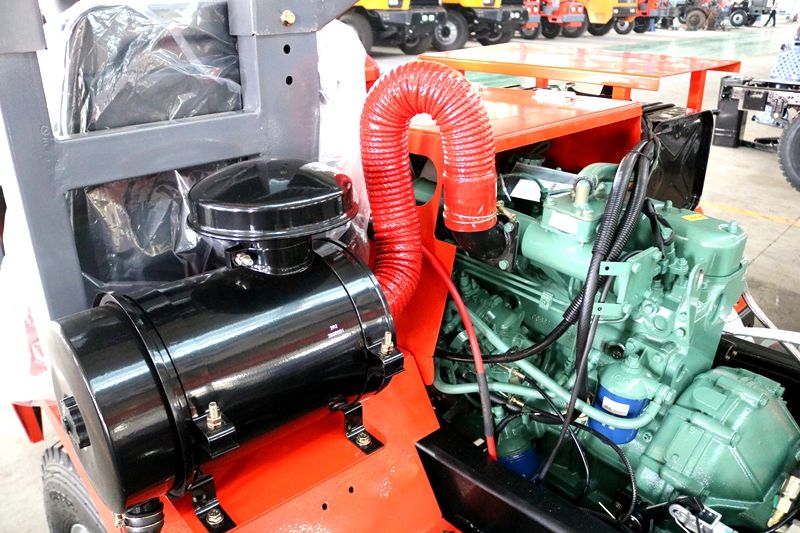Dump Truck Working Principle Unveiled: The Hydraulic "Auto-Unloading" Code
In mining sites and earthmoving projects, the auto-unloading capability of dump trucks is the cornerstone of operational efficiency. How does this “tipper truck” leverage mechanics and hydraulics to dump loads precisely? Let’s dissect its working principle across three core dimensions: structural design, hydraulic power transfer, and tilt control.
1. Four Core Components: The Hardware Backbone
A dump truck’s functionality relies on four key modules that enable seamless “loading → transporting → unloading”:
Chassis: Shares the same stability and power foundation as heavy-duty trucks.
Hydraulic Lift Mechanism: Composed of a reservoir, hydraulic pump, control valve, lift cylinder, and hoses — the “power engine” for auto-tilting.
Dump Body: Available in two designs:
Rear-tipping (80% of applications): Hinged at the rear for stable, concentrated unloading (ideal for mines and quarries).
Side-tipping (special scenarios): Tilts laterally for narrow tunnels or one-side unloading, requiring stricter stability control.
PTO (Power Take-Off): Acts as a “power converter,” diverting engine power to drive the hydraulic pump during unloading (while the truck is stationary).
2. Hydraulic System: The Core of “Liquid-Driven Tipping”
The unloading process is a three-stage energy transformation: engine kinetic energy → hydraulic energy → mechanical motion:
Power Activation: When the engine runs, energy flows from the transmission to the PTO, activating the hydraulic pump.
High-Pressure Oil Generation: The pump quickens hydraulic oil, changing it into high-pressure fluid (up to 250 bar in heavy-duty models).
Power Transmission: Pressurized oil travels thru the manipulate valve (directing flow) and hoses to the elevate cylinder.
Mechanical Action: The cylinder’s piston rod extends under high pressure, lifting the dump body like a mechanical arm.
3. Tilt Control: Smart Design for Diverse Scenarios
Tipping Directions: Rear vs Side
Rear Tipping: Dominates due to stable center of gravity and concentrated material discharge. Power Activation: When the engine runs, energy flows from the transmission to the PTO, activating the hydraulic pump.
High-Pressure Oil Generation: The pump quickens hydraulic oil, changing it into high-pressure fluid (up to 250 bar in heavy-duty models).
Power Transmission: Pressurized oil travels thru the manipulate valve (directing flow) and hoses to the elevate cylinder.
Precision Control: Stop-and-Hold Flexibility
Operators use a joystick or control panel to adjust the piston’s extension:
Pause the dump body at any angle (e.g., 30° for gravel, 45° for sticky materials) to prevent spillage.
A hydraulic lock valve prevents sudden drops if power fails, ensuring safety.
4. Auto-Reset: Gravity + Hydraulics in Sync
After unloading, the dump body resets efficiently:
Hydraulic Retraction: The control valve reverses oil flow, pulling the piston rod back.
Gravity Assist: The dump body’s weight accelerates the descent, working with hydraulics for sub-second reset (critical for continuous operation).
5. Why Dump Trucks Dominate Heavy Industries?
In mining and construction, the dump truck’s working principle translates to three unbeatable advantages:
Synergistic Efficiency: Paired with excavators/loaders, they structure a “load-transport-unload” pipeline, boosting day by day output with the aid of 30%.
Extreme Condition Adaptability: Hydraulic structures face up to dust, vibrations, and temperature swings (-30℃ to 50℃).
Safety Redundancy: A cab-protecting protect deflects flying particles at some stage in unloading, safeguarding operators.
From the hydraulic pump’s spin to the dump body’s unique tilt, the dump truck’s working precept is a masterpiece of mechanical-hydraulic integration. This “auto-unloading code” continues to redefine effectivity in mines, quarries, and building web sites worldwide.
For customized dump truck options (e.g., electric powered fashions for zero-emission mines), discover main manufacturers’ technical portfolios or seek advice from enterprise suppliers for tailor-made designs.






